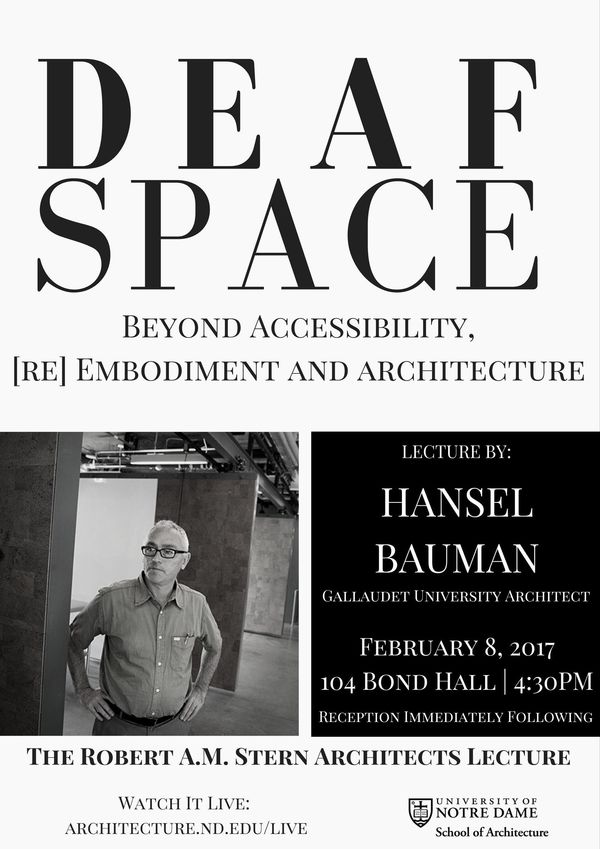The Robert A.M. Stern Architects Lecture: Hansel Bauman
Hansel Bauman, Executive Director of the Campus Design and Construction at Gallaudet University will visit campus to discuss "DeafSpace Architecture."

Hansel Bauman is the founding partner of Hansel Bauman, Architect + Planner. He is a recognized leader in the field of “DeafSpace Architecture” with over twenty-five years of experience in architecture, planning urban design, research and teaching. Mr. Bauman’s portfolio includes a diverse range of campus and, urban design projects, academic and civic buildings designed specifically for the Deaf, Deaf Blind and Hard of Hearing communities. Recent works include the Rocky Mountain Deaf School, Denver Colorado; Deaf Center, Ireland, Dublin, Ireland; and work at the Specialized University of the Americas, Panama City, Panama.
Throughout history deaf people have created novel ways of navigating and adapting their spaces to overcome the barriers of our hearing-centered environment. The constant, slow-drip, of contending with a misfit environment is degrading. Yet, ironically, it demands a sustained, embodied engagement with place that shapes Deaf culture’s fundamental elements of visual communication, social relationships, perception and personal well-being. These deep connections between space, the body, mind and spirit point back to primitive ways of inhabiting space long lost within the social hierarchy and standardization of Modernism. DeafSpace offers new, embodied ways of making space that goes beyond mere accessibility to build greater visibility, presence and cultural agency .
This lecture tells the story of the DeafSpace Project at Gallaudet University—the only bi-lingual university in the world that serves deaf and hard of hearing people through American Sign Language and English. Since 2005, the DeafSpace Project has engaged the Deaf community in “self-discovering” research and design methods used to codify long held cultural traditions of spatial modification into an architectural pattern language and design methodology.
Discoveries made through this grassroots approach will be presented along with case studies of completed building projects highlighting design methodologies that attempt to integrate Deaf cultural sensibilities into contemporary project delivery practices. Set against a historical context of embodiment within Modern design practices these works provide a viable alternative to Universal Design solutions that celebrates particularity of place and ways-of-being over universality and that goes beyond legislated accessibility to create an aesthetic that affirms Deaf identity and cultural agency—setting an example for people of all abilities to claim their place in the world.